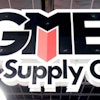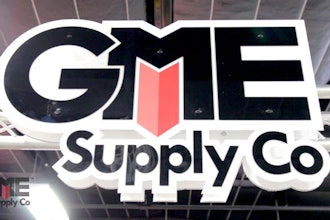We’re excited to provide the readers of Industrial Distribution with the results of our 71st annual Survey of Distributor Operations, sponsored by Infor. The objectives of this report, as always, have been to understand the most critical issues affecting distributors and to provide data to help drive their educated business decisions. Through these findings, we’ll discuss new and ongoing industry trends, as well as what previous trends have fizzled.
Whereas our 2016 survey results mirrored the downtrodden industrial economic conditions at the time, our 2017 survey respondents indicated a solid recovery for most. The industrial economy has only improved further since then, so one can likewise expect our 2018 results to show continued improvement and optimism among distributors.
But beyond economic factors impacting fiscal numbers, our survey aims to find to what extent industrial distributors are utilizing technology; the state of supplier relations; how distributors view their place in the supply chain; how they are faring in employment; and more.
In this survey report, we focus specifically on:
- Demographics — establishes a profile of survey respondents based on company size, years in business, sales volume and product line
- Challenges, Trends & Economy — outlines the initiatives distributors are undertaking to address key business and market concerns, as well as mergers and acquisitions and how distributors view the impact of the economy
- Tech Usage & Investments — covers areas like e-commerce and other big-impact technology solutions for now and the future
- The Balance Sheet — offers insights into revenues and profitability, addressing areas of investment, concern and other analysis of factors impacting revenue
- Best Practices — sheds light on distributor relationships with suppliers and customers, as well as their global business plans and what challenges are involved
- Value of the Distributor — addresses the reasons our survey respondents believe customers do business with them, and which service offerings play a significant role in the industry
- Employment — identifies hiring and layoff trends, recruitment and compensation
Methodology
The results of this study are based on an email survey sent to Industrial Distribution subscribers in April 2018, with a collection time of three weeks. Recipients of the survey were offered an incentive to complete the questionnaire. The majority of Industrial Distribution’s subscriber base is comprised of readers who identify as executive, upper management, sales or sales management. Results are based on our pool of survey respondents from within this subscriber base.
Comments on this year’s results? Email ID editor, Mike Hockett, at [email protected]
Demographics
The Demographics section of our survey reliably shows the least amount of change compared to the other categories. Still, it’s worthwhile to get an update on who, where and what our respondents of industrial distributors are.
Geographically, nearly 10 percent of our respondents hail from outside the U.S. — the highest such figure in at least 10 years of our survey. Meanwhile, the largest segment of respondents are from the U.S. Midwest at 34 percent, followed by the Northeast at 22 percent; the Southeast at 12 percent; and the South at 9 percent.
Our readership and the industrial distribution market as a whole remains largely fragmented and comprised of family-owned, small-to-midsized firms. That’s reflected in our survey results, as 60 percent of respondents are at companies that have less than $50 million in annual revenue. The largest segments are at opposite ends of the spectrum, as 32 percent are at companies with less than $10 million in sales, while 19 percent are at distributors that rake in more than $500 million.
As the first sign of the considerably improved industrial economy, 70 percent of respondents say their number of product lines increased from a year prior, up nearly five percentage points from our 2017 survey and more than 14 points higher than in 2016.
Some other demographic stats:
- More than 63 percent of respondents are at a family-owned business
- 49 percent of respondents’ companies have been in business for at least 50 years
- Our respondents’ most popular product lines are MRO supplies (54 percent); safety (46 percent); adhesives and sealants (42 percent); hand tools (41 percent); lubricants (39 percent); cutting tools (38 percent); material handling (38 percent) power tools (36 percent); hose, reels and cords (36 percent); and hydraulics (31 percent)
- Our respondents’ most popular selling markets are manufacturing/processing (78 percent); construction (61 percent); OEM (58 percent); machine shops (55.5 percent); energy (53.5 percent); government (51.5 percent); and utilities (50.5 percent)
- 50 percent of respondents are conducting business outside the U.S.
Challenges, Trends & the Economy
In our 2015 survey — which deployed a few months after oil prices bottomed out that January/February — 48 percent of respondents marked ‘economic conditions this year’ as one of their top three concerns. Our respondents are feeling much better about the economy today, as less than 31 percent picked it as a primary concern in our 2018 survey — down more than 8 percentage points from a year earlier. Price competition — one of the top concerns ever since our survey started 72 years ago — remained at the top spot for a second straight year at 52 percent, followed by distributor completion at 46 percent; finding more qualified people at 42 percent; increased operating costs at 31 percent; and e-commerce at 31 percent.
Other notable findings from this section:
- 24.4 percent of respondents picked Internet sales as one of their top three primary growth strategies — up more than three percentage points year-over-year
- More than 31 percent of respondents were at least approached in the past year about being acquired
- Nearly half of respondents — 49 percent — think industrial distributor M&A activity will stay approximately the same in the year ahead as it is now
- More than 32 percent of respondents would be agreeable to a buy-out — up three points from a year ago
- 31 percent of respondents are actively looking to purchase another distributor






















